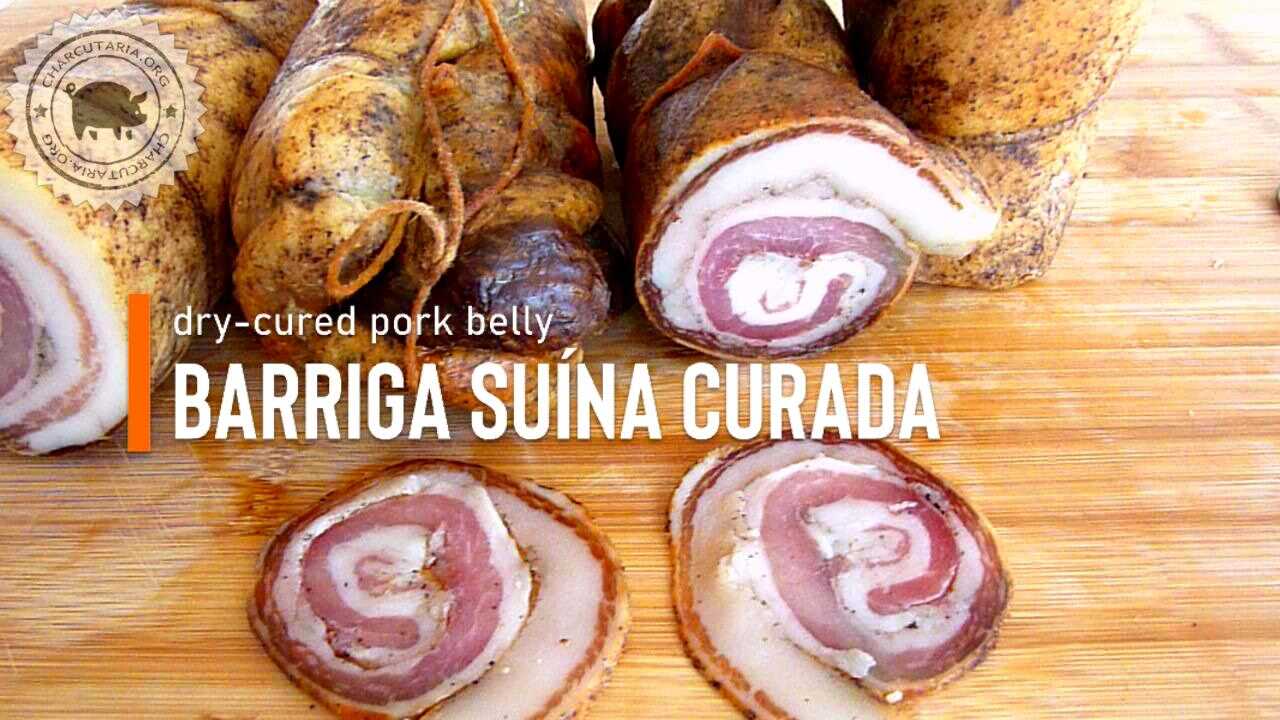
In this recipe we use the pork belly cover, which is the upper part of the belly, with the fat having a predominant presence in the piece. We remove the skin, which was used in this pururuca recipe. It is a product similar to lardo, but the seasoning is intense to aid preservation and to be used in the preparation of other dishes, as an alternative source of fat to vegetable oils. But it can also be consumed pure, in bread and as a snack. With a good amount of maturation time, it acquires a wonderful flavor, similar to raw ham, but well seasoned.
Ingredients
For 1 kg of belly:
- 30g salt
- 3g antioxidant with erythorbate
- 2g natural antioxidant rosemary extract
- Black pepper – 3g – 0.3%.
External seasoning ingredients
to taste, enough to cover the entire piece:
- smoked papica;
- sweet paprika;
- nutmeg;
- black pepper.
Preparation
- Select a belly with a good amount of fat;
- Remove the skin;
- Spread the seasonings well;
- Place in a plastic bag or container and refrigerate for 7 days;
- Remove from refrigeration, wrap tightly to remove internal air, secure with elastic ties or tie firmly;
- Hang in an environment with slight ventilation, temperature and humidity close to 12ºC and 80%. It can be a specific maturation chamber, a cellar or in the refrigerator, using a box like in this recipe. salami made in the fridge.
- Leave for at least 90 days. This recipe stayed for 5 months;
- Slice and eat as a snack, in bread or use in cooking, as a source of fat and flavor.
Start of maturation: 03/09/2021
end of maturation: 08/09/2021














Goodnight! Is there any substitute for rosemary extract?
Hi Demian. As an antioxidant, it has erythorbate, ascorbic acid and other natural ingredients that also help prevent oxidation, such as oregano.
because the salami was stiff to the meat and the seasoning was great.
The final appearance was great, and I imagine the flavor, too! I'm going to try making the cured pork belly.
As I have replicated several recipes from this website, it caught my attention that I DO NOT USE curing salt (1 or 2). Is there any special reason for this? When it comes to long curing, can curing salt 2 be used?
Thank you for sharing this charcuterie item more. A hug, André.
Heh heh. I just read, in the YouTube comments, Charcutaria.Org's considerations on the same issue. Therefore, there is no need to respond again, unless you want to leave a note here on the website.
Andrew.
Leave the answer here to reinforce the information about the absence of curing salt, which is very relevant.
Hi André. Your question is very important. As it is a product with little meat and a lot of fat (consequently low presence of water), high seasoning and salt concentration, I considered the use of curing salt unnecessary. But it was a one-off option and the curing salt (2 in this case) is a good option for those who want even more protection. A big hug!